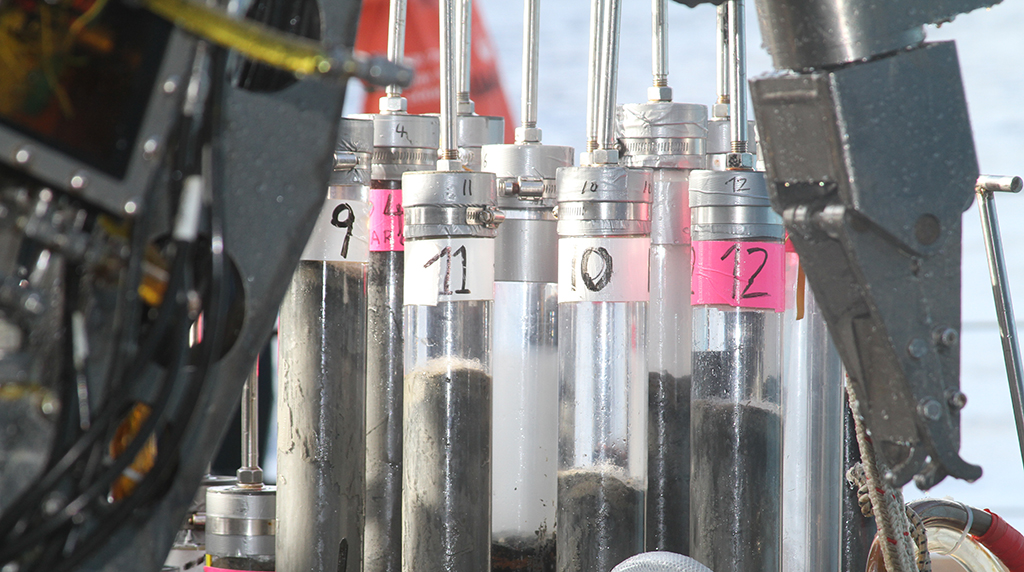December 16, 2016
Large amounts of marine oil snow formed at the surface of the Gulf of Mexico within a few days of the Deepwater Horizon accident of 2010. These small clumps of floating oil and particles began to collect extra debris, fecal pellets and oil particles and slowly lost their buoyancy, sinking to the bottom through a process called sedimentation. Rates of sedimentation in the Gulf during the summer and fall of 2010 were found to be two orders of magnitude higher than before the spill, resulting in a huge pulse of material to the sediments below.
Naturally occurring microbial communities in the sediments respond and adapt to the availability of hydrocarbons (carbon from oil and gas), a popular food source for some microbes- in this recent paper by ECOGIG scientists, they looked at how the sediment microbial communities changed over time after the accident. Researchers found that between May 2010 and June 2011, there were distinct changes in the microbial sediment communities. In September and October of 2010, heterotrophic bacteria (organisms that can only use organic carbon as a food source) were abundant and rapidly consumed the easy to breakdown pieces of the hydrocarbons in the sediment. The rapid breakdown of hydrocarbons consumed a significant amount of oyxgen at the sediment surface in the process, creating anoxic (very low to zero oxygen concentrations) spots in the sediment. This gave anaerobic microbes (organisms that do not require oxygen for growth) the chance to multiply and degrade the harder to break down hydrocarbons- denitrifying bacteria, metal reducing bacteria and sulfur reducing bacteria were among some of the microbes classified by researchers in their sediment samples during this time period. Samples taken in November of 2010 found the microbes beginning to return to pre-spill community structures, but the researchers found that specialized oil degrading bacteria were still present on a finer scale.
The microbial community of the Gulf of Mexico's seafloor changed over time, on a longer timescale than the water above it. As the overlying water microbial communities were changing back to pre-spill conditions, the oil degraders were just getting started in the sediments as the marine snow settled on the seafloor. Seafloor sediments do a great job of integrating the changes in the overlying water column, and the Gulf's sediments will forever retain an archive of the large pulse of sedimented oil from the Deepwater Horizon accident.
You may access the entire paper, titled "Distinct bacterial communities in surficial seafloor sediments following the 2010 Deepwater Horizon blowout" online here.
To read more about the research being done by ECOGIG scientists on microbial community activities in the Gulf, visit our web page on microbial community dynamics.
To read more about the research being done by ECOGIG scientists on marine oil snow in the Gulf, visit our web page on sedimentation and resuspension dynamics.


















 back to top
back to top